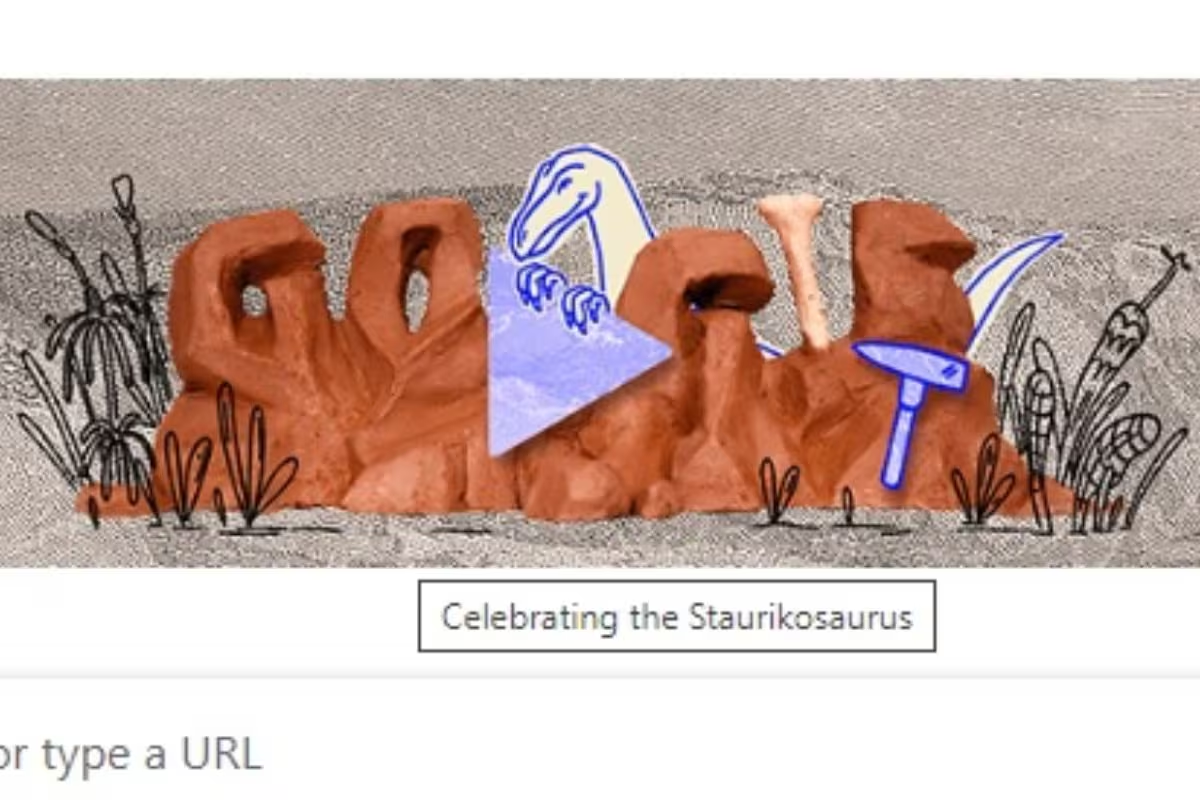Oct 19,2024

Google Doodle today on October 19, 2024 celebrates the groundbreaking discovery of the Staurikosaurus, an early theropod dinosaur that sheds light on the origins and evolution of these fascinating creatures.
The animated Doodle shows a Staurikosaurus dinosaur running through a prehistoric landscape. It highlights the dinosaur’s speed and agility, as well as its distinctive long tail and bipedal stance. The doodle also shows the dinosaur’s serrated teeth, suggesting its predatory nature.
Google also shared photos of work in progress behind today’s doodle. Here’s a look.




In 1936, paleontologist Llewellyn Ivor Prince unearthed a remarkable fossil specimen at the Santa Maria Formation in southern Brazil. This discovery, later identified as the Staurikosaurus, has become a cornerstone in our understanding of dinosaur evolution.
Radiocarbon dating techniques revealed that the Staurikosaurus lived during the late Triassic period, approximately 225 million years ago. This ancient predator, often referred to as the “Southern Cross Lizard,” was named after its constellation of origin.
While the Staurikosaurus remains the only known representative of its species, the fossil evidence provides invaluable insights. This dinosaur was relatively large for its time, measuring around 2 meters long and weighing approximately 30 kilograms. Its bipedal stance and long tail suggest a fast-moving predator, well-equipped to catch and hold prey.
The discovery of the Staurikosaurus has played a crucial role in advancing our knowledge of dinosaur evolution. By studying this early theropod, paleontologists have been able to piece together the puzzle of how these magnificent creatures first appeared on Earth and began their remarkable journey.
The Staurikosaurus continues to inspire awe and wonder, reminding us of the incredible diversity and complexity of life that has existed on our planet. As we celebrate this significant discovery, let us also acknowledge the tireless efforts of scientists who continue to unravel the mysteries of our prehistoric past.
.svg)
